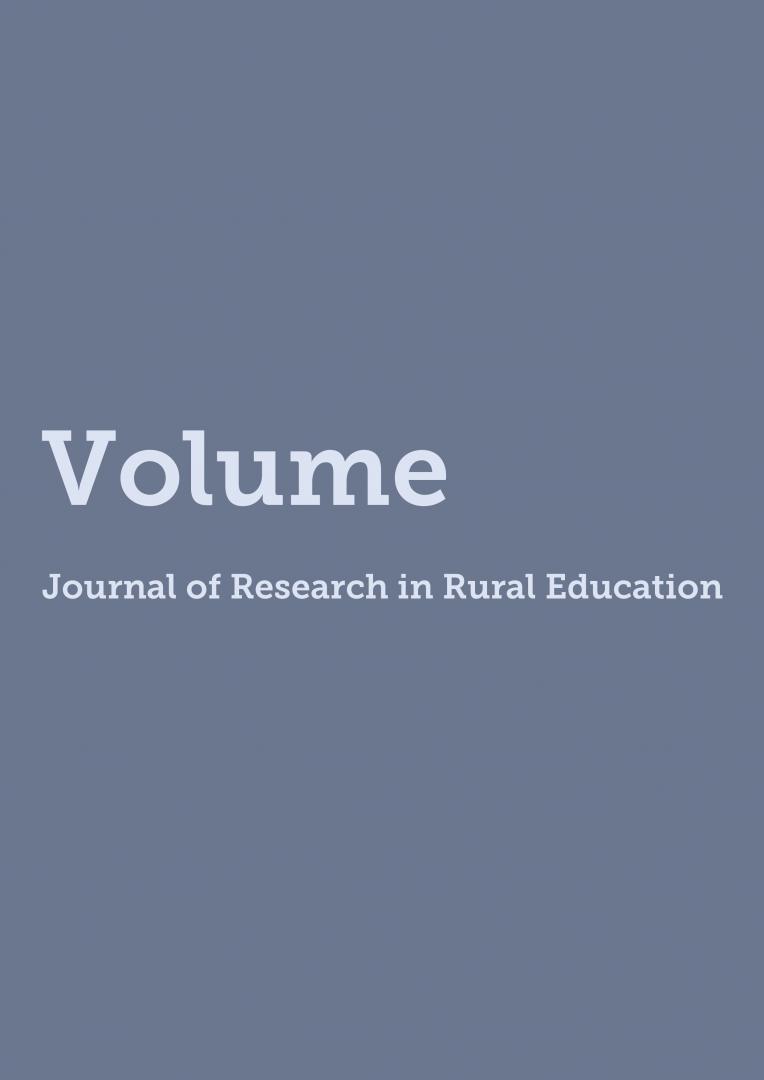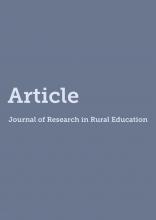
Introduction
Erin McHenry-Sorber & Daniella Hall

book
This article examines the unique features of the rural school context and how these features are associated with the stability of principals in these schools. Given the small but growing literature on the characteristics of rural principals, this study presents an exploratory analysis of principal stability across schools located in different geographic locales. We use longitudinal data covering all certified education positions in Texas over an eight-year period and employ logistic regression models to examine the ways in which individual and school characteristics influence five-year retention rates for all principals as well as for rural principals. Broadly, our data show that rural principals, on average, leave their positions earlier than non-rural principals and have lower levels of stability. Our results further suggest that while rural principals exhibit less gender and racial diversity, they do not exhibit shorter spells of employment as a principal after controlling for personal and school characteristics. Rural female principals are more stable than rural male principals. In addition, we find that principals with more teaching experience are more stable while those with more assistant principal experience are less stable.

book
We report on a phenomenological study of the leadership experiences of six novice, rural public school principals in a midwestern U.S. state. We situated our analysis within existing research on leadership for learning, particularly how novice principals interpreted instructional leadership challenges in the context of rural school leadership. Our findings indicated that principals worked to balance their professional and private lives and were challenged to meet their community’s expectations to be visible and engaged. To meet districts’ constrained budgetary circumstances, the principals also maintained overlapping district- and building-level responsibilities. The principals focused heavily on developing relationships and trust among their teachers, students, and parents. The implications of this study demonstrate a need to develop new leaders’ understanding of rural school community expectations; develop skills to fulfill expanding job responsibilities; and supplement leadership preparation, mentoring, and professional development programs regarding the specialized needs of rural school leaders.

book
Rural schools have repeatedly been subjected to standardizing state and federal education policies that seek to minimize variance in instructional systems and increase the number of college- and career-ready graduates. The Race to the Top policy agenda combined standards-based and accountability-based reforms to meet these objectives and once again subjected rural schools to innovations from outside experts. This qualitative study uses four instrumental cases of rural schools to understand: 1) leadership strategies, and 2) mechanisms and processes of alignment, which allowed schools to maintain high levels of student performance in the face of disruptive policy innovations. The findings of the cross-case analysis identify rural school and district leaders’ contingent use of adaptive strategies of buffering, bridging, and brokering. Mechanisms and processes of shared goal setting, ongoing curriculum revision, and teacher collaboration that contribute to the development of coherence supported these strategies. Together, leadership strategies and coherence allow leaders and educators to assimilate, transform, and create new knowledge in ways that provide absorptive capacity and allow for selective implementation of disruptive innovations.

book
Since the 1970s, there has been keen interest in examining gender representation in leadership positions across various areas of employment, including K-12 education. Indeed, there have been long-standing concerns about the percentage of women principals. Few studies, however, have examined the percentages of women principals at different schooling levels (elementary, middle, and high schools) and across different geographic locales. In this study, we rely on 23 years of employment data for Texas public schools to examine the percentage of employed principals and newly hired principals who were women by school level and geographic locale. We also employ logistic regression to identify the independent effect of a school being located in a rural area on the odds of a school hiring a woman to be principal. We find that schools in all locales evidence an increase in hiring women as principals—particularly during the 1990s. We also find schools located in rural areas—both inside and outside metropolitan statistical areas—were less likely than schools located in large cities and large suburbs to employ a woman principal and hire a woman to fill a vacancy in the principalship.

book
From 2004-06, the Osage Nation of Oklahoma reformed its government from a tribal council system to a tripartite constitution. Following this reorganization, through a community outreach effort a 25-year strategic plan was developed to guide the Nation moving forward. Now, a decade into the plan, recent Osage land (re)acquisition across the reservation has generated new potential and need for agricultural education and leader development. Our contribution to the Journal of Research in Rural Education’s special issue on diversity in rural education is a framework for how the Osage Nation might develop agricultural education that focuses on fostering Osage-specific place-based identities in the next generation of agricultural leaders. While framing this conversation through Dennison’s lens of Osage ribbon work and settler-colonial entanglement, paired with Gruenewald’s critical pedagogy of place, this essay informs educators about the unique position of Native nations in education and simultaneously a theoretical and practitioner-driven analysis of how agricultural education intersects with the Osage Nation’s 25-year strategic plan.
